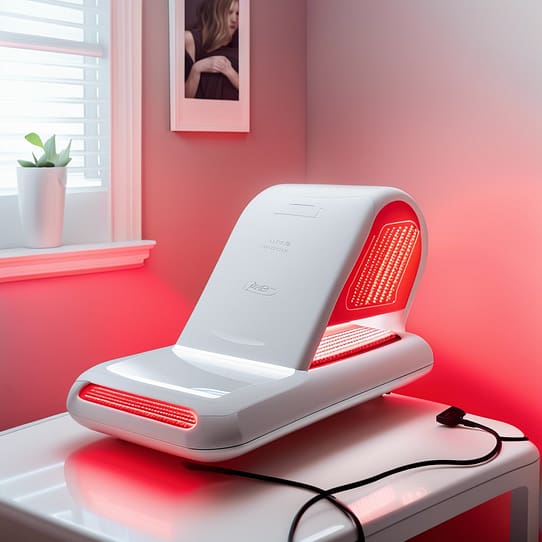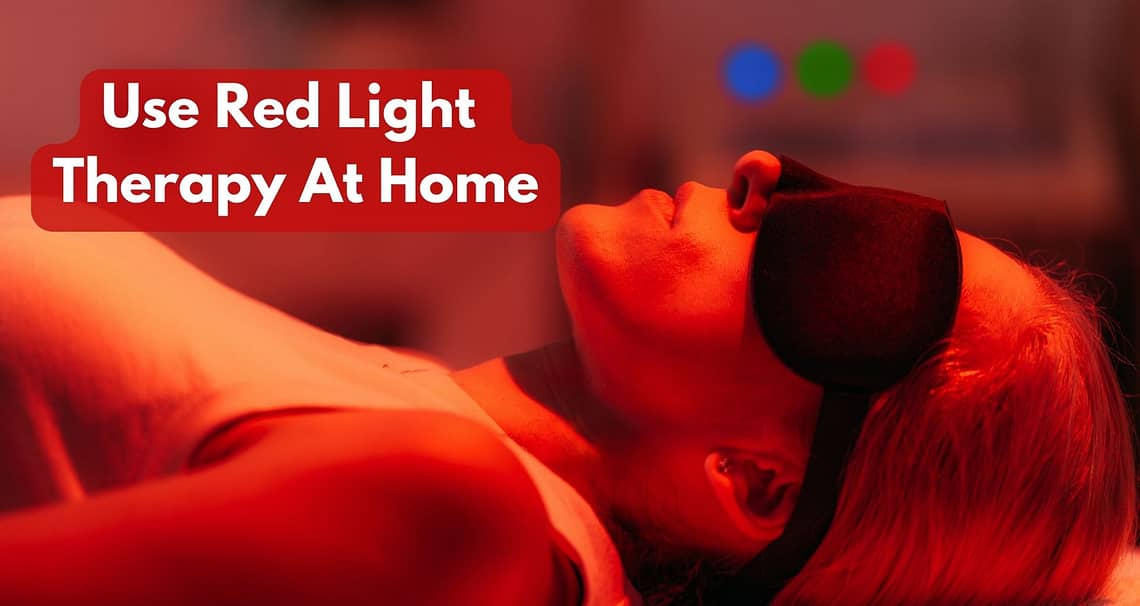If you’ve ever wondered about the safety of using red light therapy at home, you’re not alone. In this article, we’ll explore the topic and provide you with all the information you need. From the basics of red light therapy to common FAQs and a conclusion, we’ll address any concerns you may have.
So, let’s dive into the world of red light therapy and discover if it’s a safe practice to incorporate into your daily routine at home.
Overview of Red Light Therapy
Red light therapy, also known as photobiomodulation, is a non-invasive treatment that uses low levels of red or near-infrared light to stimulate the body’s natural healing processes. This therapy has gained popularity in recent years due to its numerous potential benefits and the convenience of using it at home.
What is red light therapy?
Red light therapy involves exposing the skin to red or near-infrared light, which is believed to penetrate the skin and stimulate various cellular processes. It is a form of light therapy that does not produce heat and is usually painless.
How does red light therapy work?
Red light therapy works by stimulating the mitochondria in the cells to produce more energy, boost collagen production, and reduce inflammation. This increased energy production can help promote healing, reduce pain and inflammation, and improve overall skin health.
Benefits of red light therapy
Red light therapy has been studied for its potential benefits in various areas, including skin health, pain relief, wound healing, and reducing inflammation. Some of the potential benefits of red light therapy include:
- Improved skin elasticity and reduced wrinkles
- Enhanced muscle recovery and reduced post-workout soreness
- Accelerated wound healing and reduced inflammation
- Relief from joint pain and arthritis symptoms
- Improved mood and reduced symptoms of depression
Different Types of Red Light Therapy Devices
There are different types of red light therapy devices available on the market, each with its own unique characteristics and benefits. Here are some of the most common types:
LED light therapy devices
LED light therapy devices use light-emitting diodes to emit red or near-infrared light. These devices are typically safe and easy to use at home. LED devices are often used for facial rejuvenation, acne treatment, and pain relief.
Low-level laser therapy (LLLT) devices
LLLT devices use laser technology to deliver a more targeted form of red or near-infrared light therapy. These devices are often used in professional settings, but there are also home-use LLLT devices available. They can be effective for targeted pain relief, hair regrowth, and wound healing.
Combination red light therapy devices
Combination red light therapy devices combine red or near-infrared light with other therapies, such as infrared heat or ultrasound. These devices offer a more comprehensive approach to therapy and can be beneficial for various conditions, including musculoskeletal pain and skin rejuvenation.
Also Check: How To Apply Hair Serum For Great Results
Safety Considerations

Source: Pexels.com
While red light therapy is generally consider safe, it is important to take certain safety considerations into account, especially when using it at home.
Eye protection
When using red light therapy devices, it is essential to protect your eyes from direct exposure to the light. Some devices come with built-in eye protection, while others may require the use of goggles or simply keeping your eyes closed during the treatment.
Skin sensitivity
While red light therapy is generally well-tolerated, some individuals may experience skin sensitivity or irritation. It is recommended to start with shorter treatment sessions and gradually increase the duration as tolerated. If you experience any adverse reactions, discontinue use and consult a healthcare professional.
Pregnancy and breastfeeding
The safety of red light therapy during pregnancy and breastfeeding is not yet established. It is generally recommended to consult with a healthcare provider before using red light therapy if you are pregnant or breastfeeding.
Photosensitivity
Red light therapy may cause increased sensitivity to sunlight. It is important to protect your skin from excessive sun exposure and use sunscreen when necessary.
Potential side effects
While rare, some individuals may experience mild side effects such as temporary redness, itching, or dryness of the skin. These side effects usually subside shortly after the treatment.
Interactions with medications
Certain medications, such as antibiotics or medications that cause photosensitivity, may interact with red light therapy. It is important to consult with a healthcare provider if you are taking any medications to ensure there are no potential interactions.
Choosing the Right Red Light Therapy Device
When selecting a red light therapy device for home use, there are several factors to consider to ensure you choose the right device for your needs.
Consider your goals
Identify the specific goals you want to achieve with red light therapy. Whether it’s improved skin health, pain relief, or a specific condition, understanding your goals will help you choose the most suitable device.
Quality and safety certifications
Make sure to choose a device that has undergone testing for safety and efficacy. Look for devices that have certifications from recognized organizations, such as the FDA or CE.
Device specifications
Consider factors such as the light intensity, wavelength, and treatment area coverage of the device. These specifications can vary between different devices and may have an impact on the effectiveness of the therapy.
Personal preference and convenience
Consider factors such as the size and portability of the device, ease of use, and any additional features that may enhance your overall experience. Choosing a device that aligns with your personal preferences will make it more likely for you to use it consistently.

Source: TheTechBrain AI
FAQs (Frequently Ask Question)
Is red light therapy safe for everyone?
Red light therapy is generally safe for most people. However, it is important to consider any specific medical conditions or medications that may interact with the therapy. Consulting with a healthcare provider is recommended, especially if you have any underlying health conditions.
How often should red light therapy be used?
The frequency of red light therapy sessions can vary depending on the individual and the specific condition being treated. It is generally recommended to start with a few sessions per week and gradually adjust based on your response to the therapy.
Can I use red light therapy on my face?
Yes, red light therapy can be use on the face. It is often use for facial rejuvenation, acne treatment, and improving overall skin health.
Does red light therapy have any age restrictions?
Red light therapy does not have specific age restrictions. However, it is important to consider the specific needs and condition of the individual, especially when using red light therapy on children or older adults. Consulting with a healthcare provider is recommend in these cases.
Can red light therapy help with weight loss?
While red light therapy has potential benefits for overall health and well-being, it is not a standalone weight loss solution. It may complement a healthy lifestyle that includes regular exercise and a balanced diet.
Is red light therapy FDA-approved?
Red light therapy devices may be FDA-clear for specific uses, such as pain relief or skin rejuvenation. However, it is important to check the specific clearance of the device you are considering to ensure its safety and effectiveness.
Can red light therapy be used alongside other treatments?
Red light therapy is often use as a complementary therapy alongside other treatments. It can be beneficial in combination with physical therapy, chiropractic care, or skincare routines. However, it is important to consult with healthcare professionals to ensure there are no contraindications or potential interactions.
Are there any long-term effects of red light therapy?
Extensive research on the long-term effects of red light therapy is still ongoing. However, based on current evidence, red light therapy is generally consider safe and well-tolerated when used properly.
Is it safe to use red light therapy while pregnant?
The safety of red light therapy during pregnancy is not yet establish. It is recommended to consult with a healthcare provider before using red light therapy if you are pregnant.
Can red light therapy help with acne?
Red light therapy has shown potential benefits for treating acne by reducing inflammation and promoting healing. It can be a helpful addition to an acne skincare routine.
Does red light therapy work for hair growth?
Red light therapy may help stimulate hair growth by increasing blood flow, promoting cellular activity, and reducing inflammation in the scalp. It can be beneficial for individuals experiencing hair loss or thinning hair.
Is red light therapy suitable for individuals with sensitive skin?
Red light therapy is generally well-tolerated and can be suitable for individuals with sensitive skin. However, it is recommended to start with shorter treatment sessions and gradually increase the duration to assess your skin’s response.
Conclusion
Red light therapy is a non-invasive and potentially beneficial treatment that can be safely use at home. By understanding the different types of devices, considering safety considerations, and choosing the right device for your needs, you can experience the potential benefits of red light therapy.
Remember to consult with a healthcare provider if you have any underlying medical conditions or are unsure about using red light therapy.





